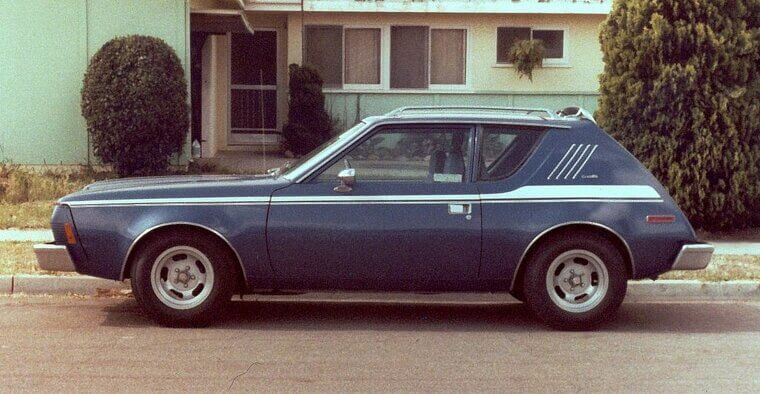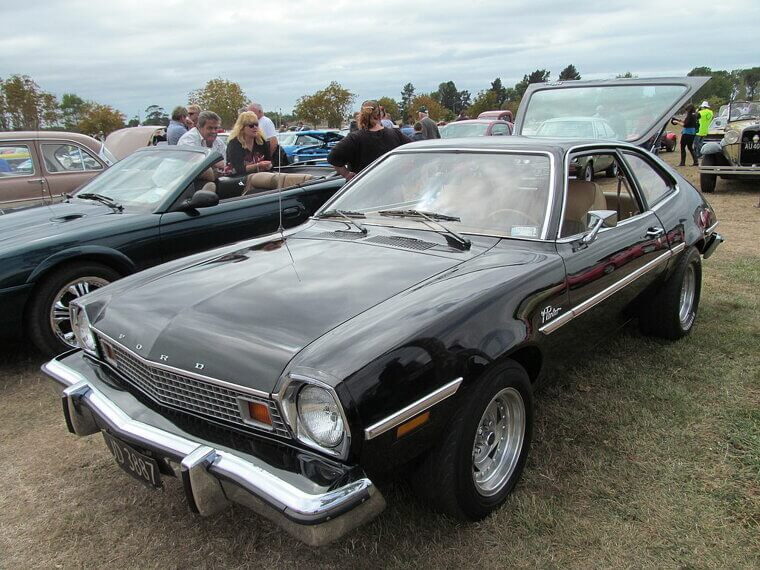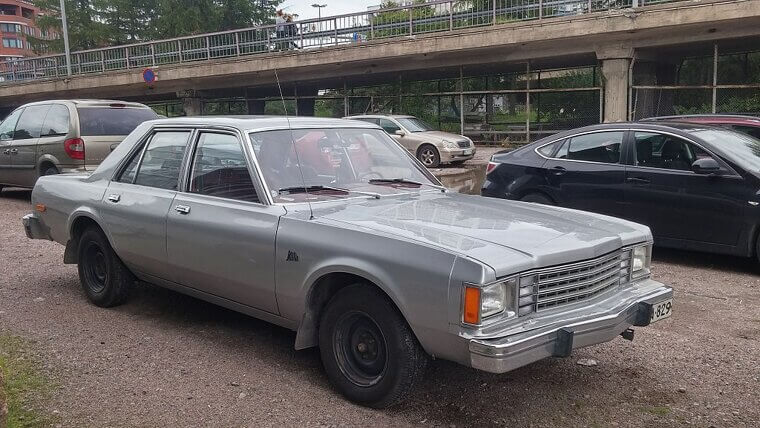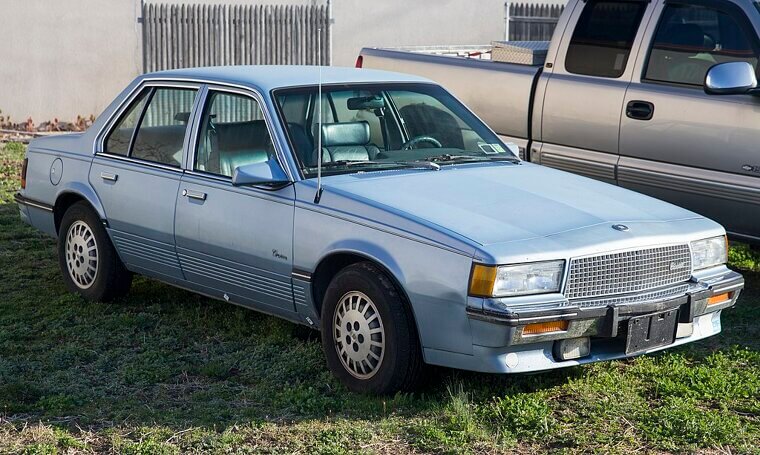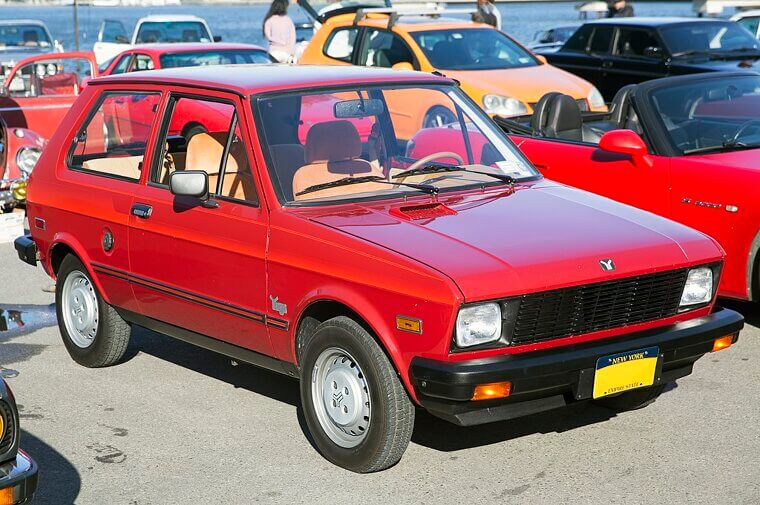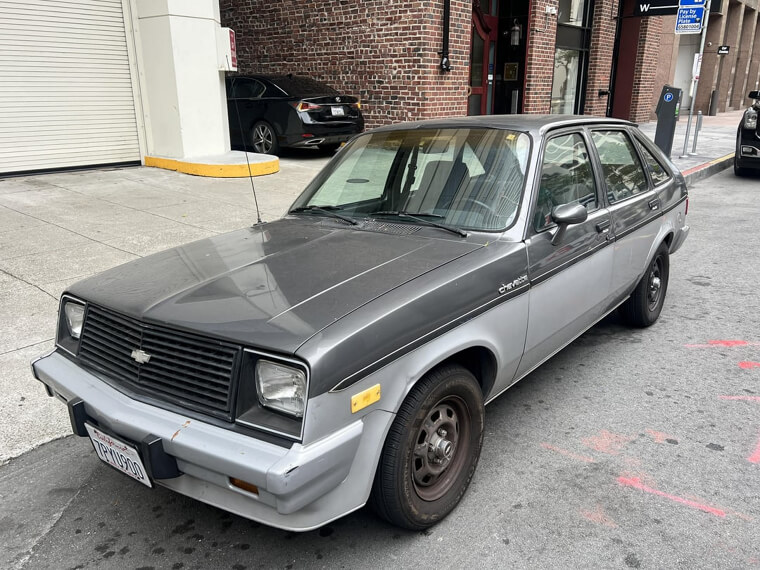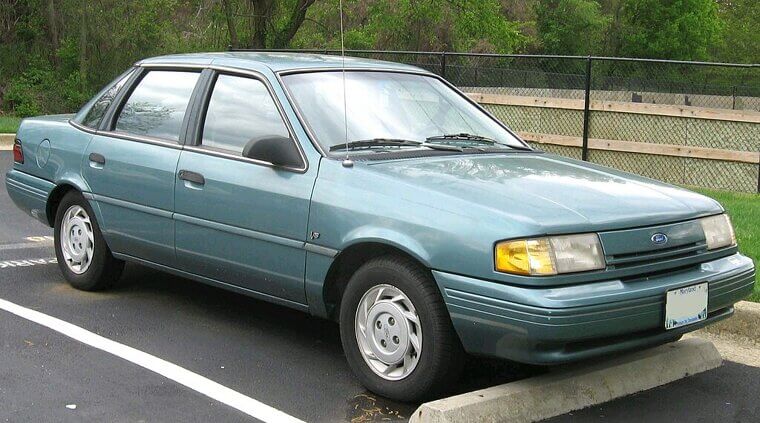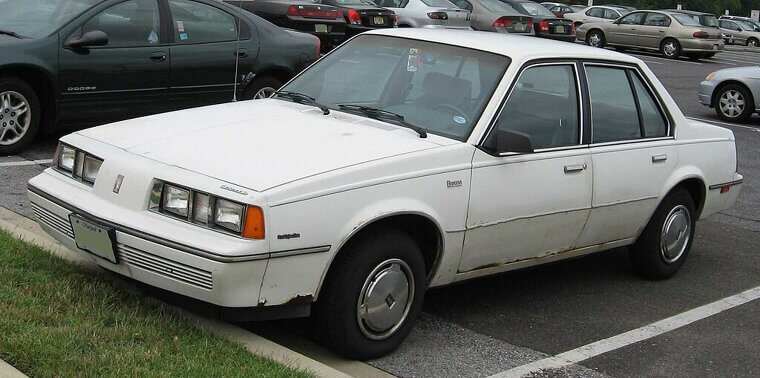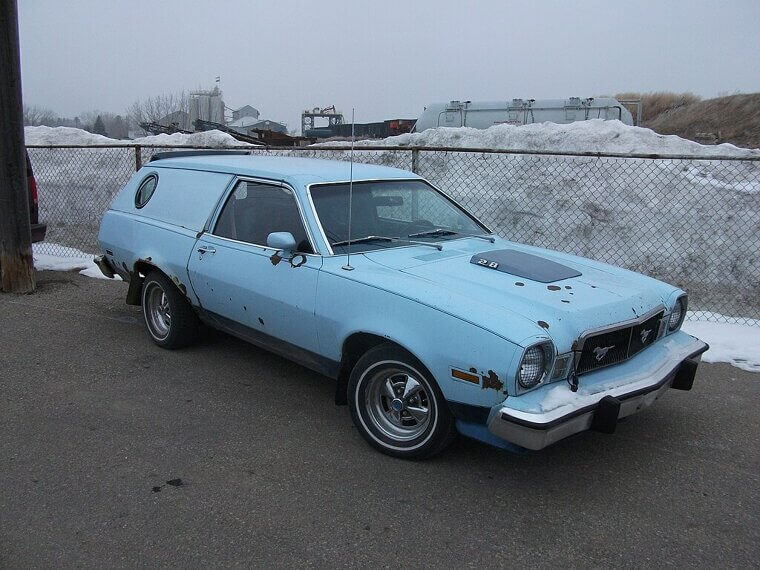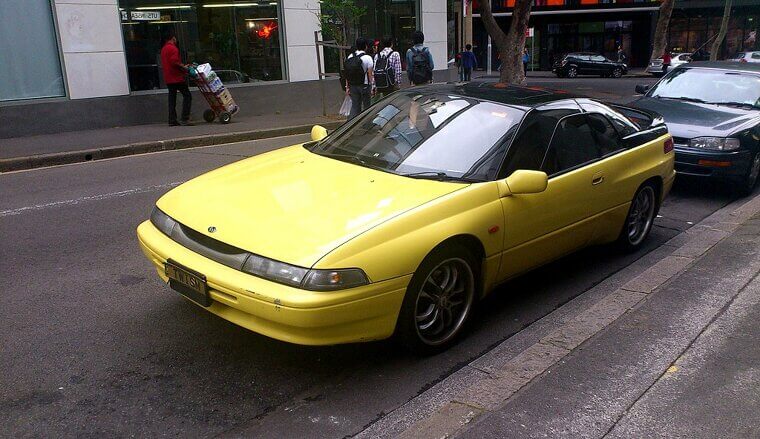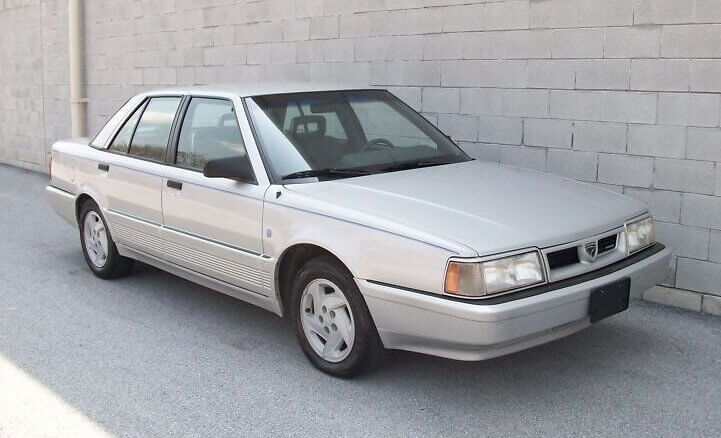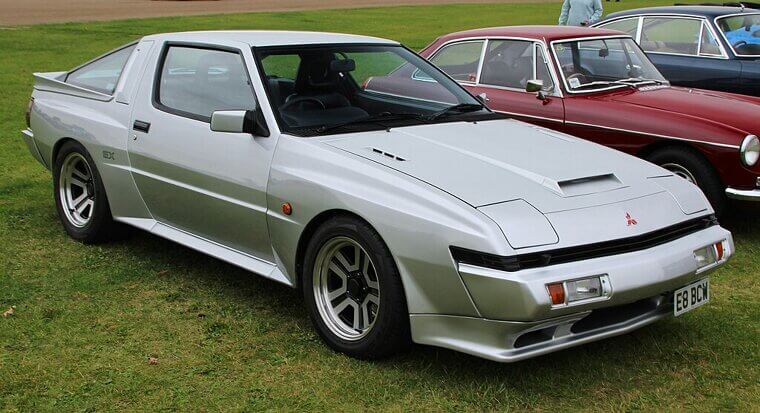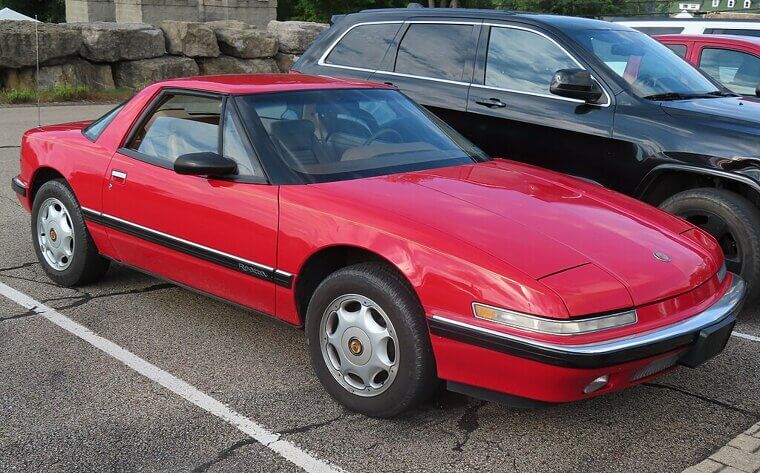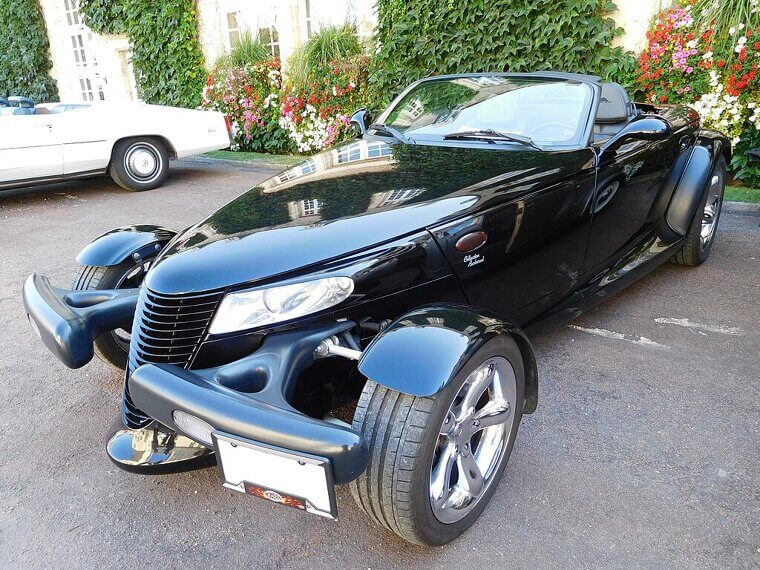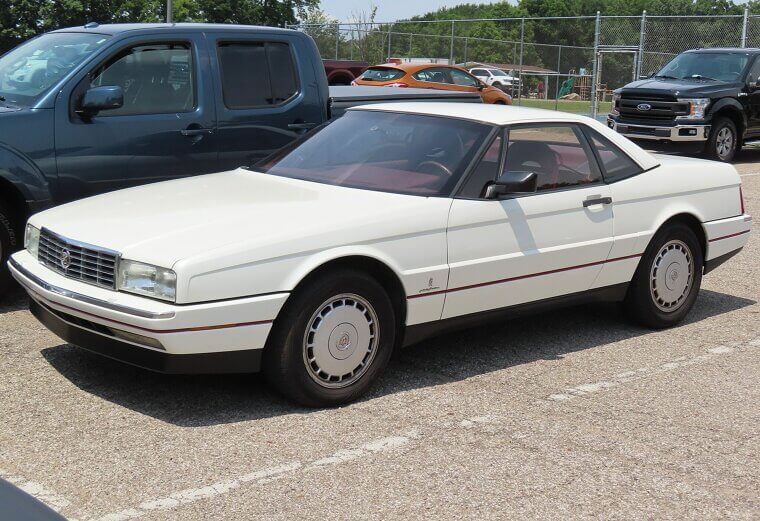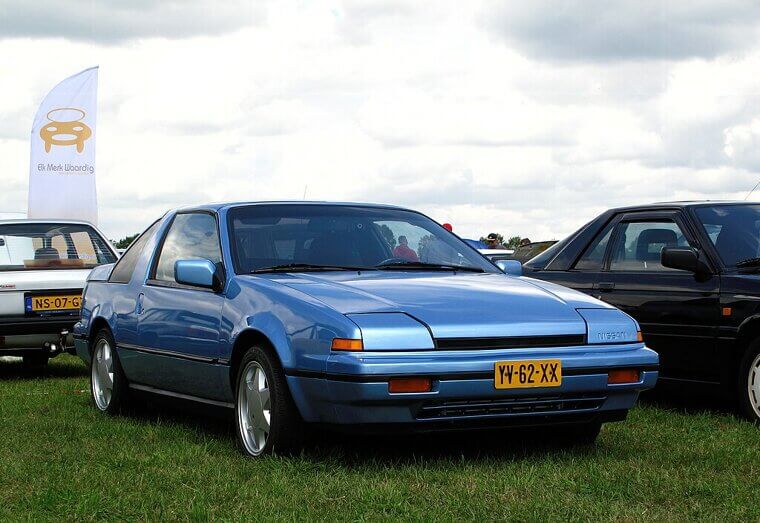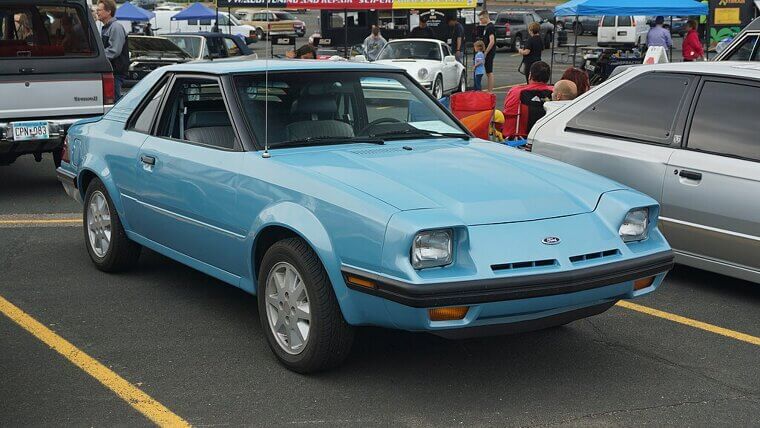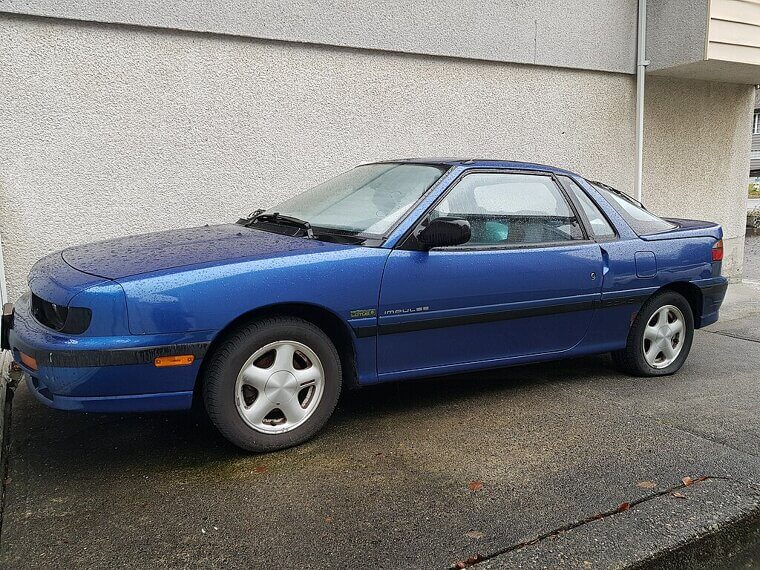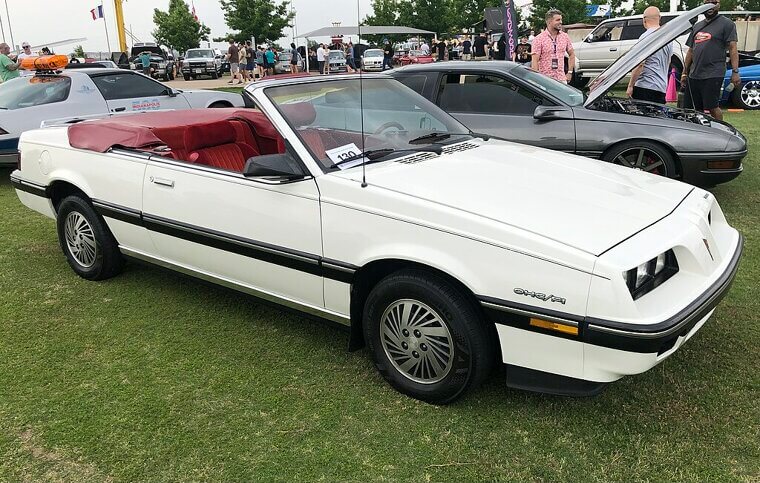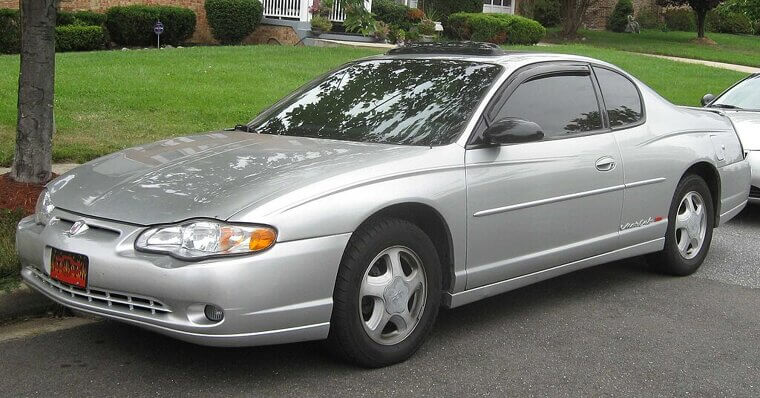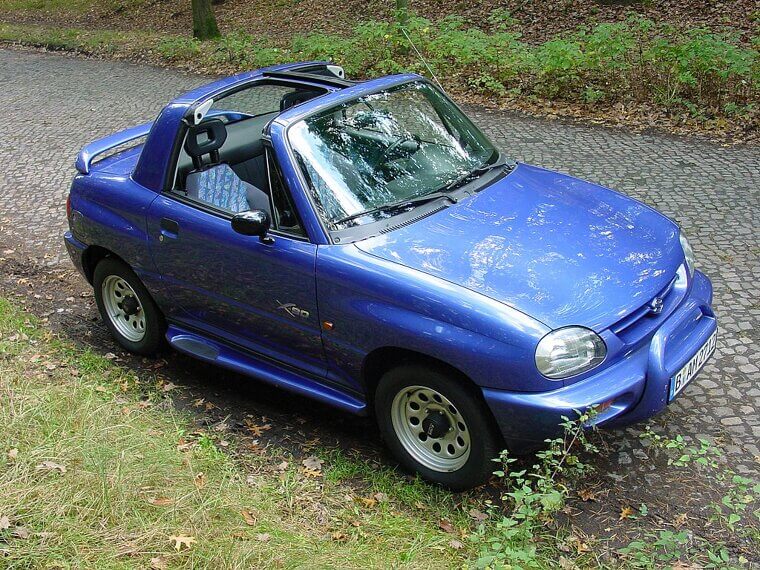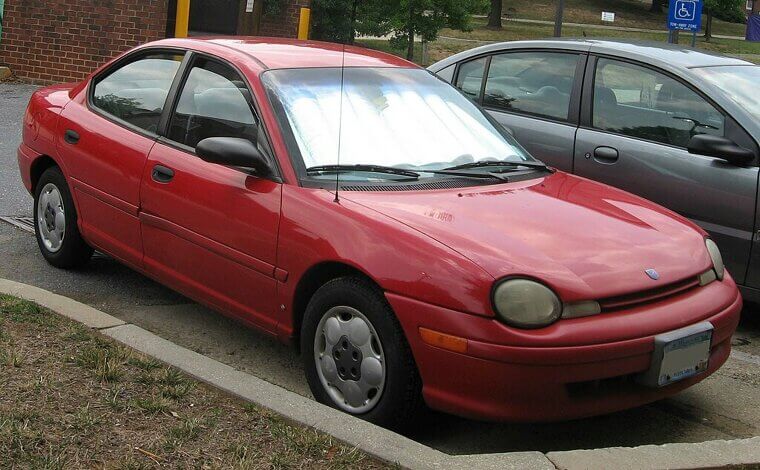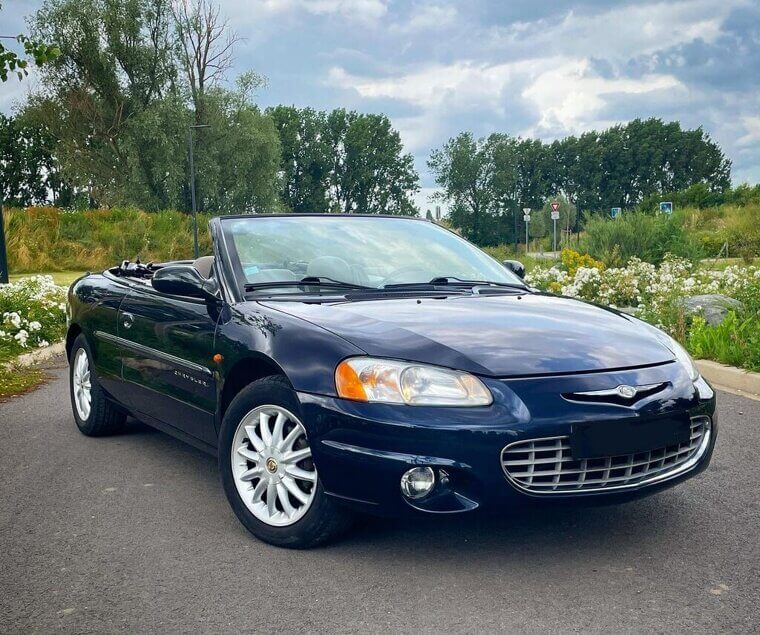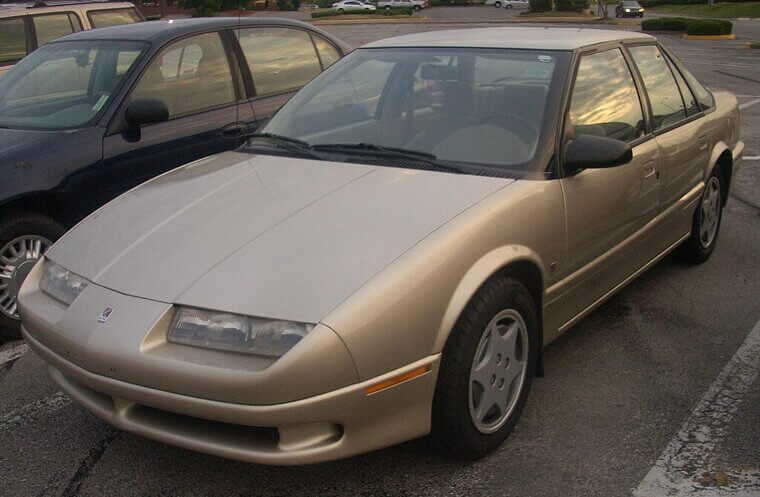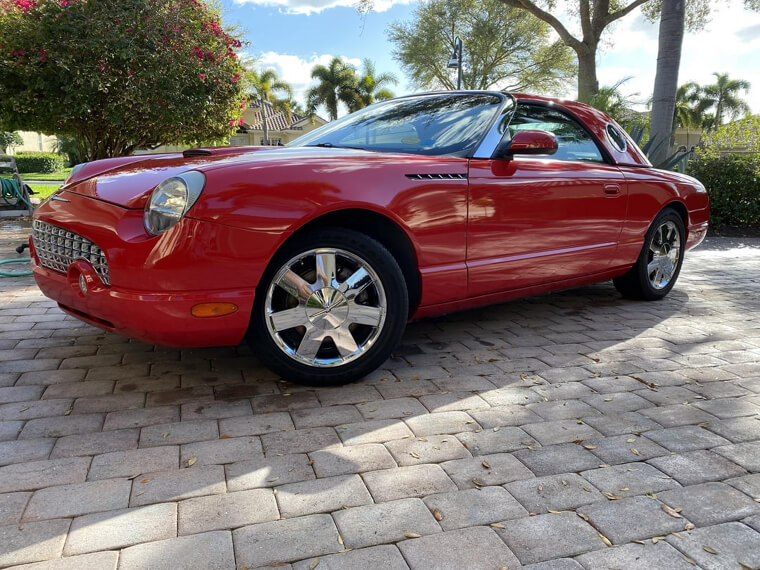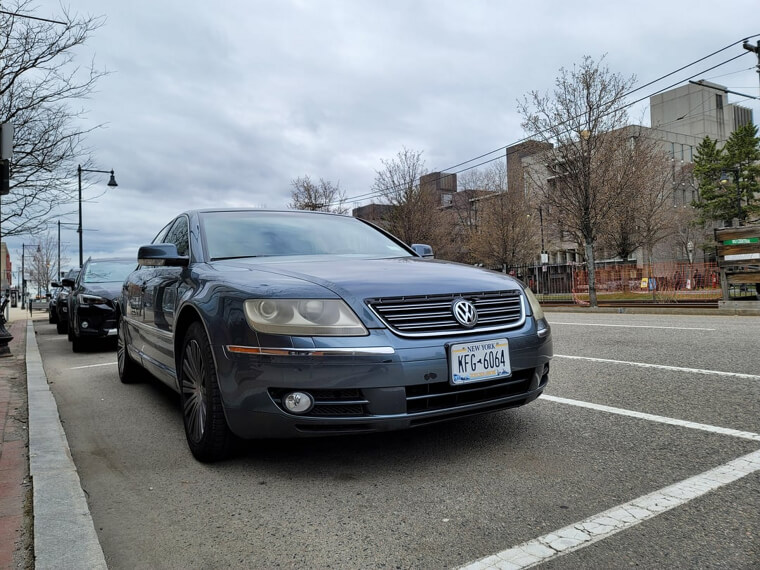AMC Gremlin (1970–1978)
In a bid to compete with foreign compacts, AMC made their own by chopping the back end off a Hornet and calling it a Gremlin. It lived up to its name - it was quirky, so it got a cult following - but it’s too kitsch to have monetary value.
Ford Pinto (1971–1980)
To combat lightweight cheap imports, Ford released the Pinto which was even cheaper. They also threw safety precautions out the window with a rear engine design that blew up in a collision, so it’s now only attractive to collectors with a dark curiosity or as garage art.
Chevrolet Citation (1980–1985)
The Citation brought an innovative front-wheel drive (FWD) layout to the table, then essentially ruined the meal with a food fight. It was riddled with recalls, mechanical issues and parts failures, so now it’s more of a horror story than a car. Collector interest? Next to none.
Dodge Aspen (1976–1980)
Dodge wanted a quick replacement for older models, so they rolled out the Aspen in a hurry… and it shows. Quality control issues were prevalent, but it rusted if you so much as mentioned cold weather around it. Needless to say, collectors don’t want a rust bucket.
Plymouth Volaré (1976–1980)
The Volaré (that’s Italian for “fly”) was grounded from the start due to its various recalls, poor reliability, and its love affair with rust. If you want something that moves at a snail’s pace and oxidises while you watch, it’s the car for you.
Cadillac Cimarron (1982–1988)
Cadillac slapped a badge on a Chevy Cavalier and called it the Cimarron. They were identical in every way except for their price tag (which Cadillac increased) and when people found out, it destroyed the brand’s reputation. It’s not valuable unless you collect cautionary tales.
Yugo GV (1985–1992)
The Yogoslavian-created GV was designed to be the cheapest car in the U.S. and it was… but you get what you pay for. It was super cheap, super terrible and could be found broken down at the roadside more often than on the blacktop.
Renault Alliance (1983–1987)
The Renault Alliance is an AMC-built Renault 9 for American buyers, and it was released to fanfare and awards - until its reliability turned up missing. It had poor build quality, cheap parts and support ghosted it, so now it haunts the dark corners of automotive history.
Pontiac Aztek (2001–2005)
With a chassis that not even a mother could love, the Aztek is considered one of the ugliest cars ever! It was the butt of many jokes for the longest time, but an appearance in “Breaking Bad” made it slightly more of an interest to collectors. But only slightly.
Chevy Chevette (1976–1987)
GM’s economy Chevy Chevette was easy to fix and affordable, but that’s as far as it went. It was slow, noisy and handled like a bent can of beans; the best thing that could be said was it got you from point A to point B.
Ford Tempo (1984–1994)
Ford sold Tempos like hotcakes when it first came out, but it was largely through convenience; the car was more like a flat note than an exciting rhythm. It had boring handling, underpowered engines and an interior that comfort only visited in short spells.
Oldsmobile Firenza (1982–1988)
GM decided to make its own Chevy Cavalier, and the result was the Firenza. Unfortunately it missed every mark; Oldsmobile fans expected comfort and prestige, and they got a carbon copy of another vehicle. It’s not even ob collectors’ radars.
Mercury Bobcat (1975–1980)
Remember the exploding Ford Pinto fireball? The Bobcat’s pretty much the same car with a different badge, aimed at soccer moms who don’t know they’re driving corporate negligence on wheels. As with the Pinto, it’s a hard pass from most collectors.
Subaru SVX (1991–1996)
The designer behind the DeLorean, Giorgetto Giugiaro, created the space age-looking SVX with windows in its windows, but drivetrain reliability issues and bloated weight kicked it to the curb. Some collectors are interested because it’s so weird, but it’s not exactly a hot commodity.
Chrysler TC by Maserati (1989–1991)
A Chrysler-Maserati collaboration produced the TC, which sounds promising but resulted in a Frankenstein car with all the weaknesses of both brands and the strengths of neither. It was expensive, disappointing and confusing, so only aficionados of weird cars seek them out.
Eagle Premier (1988–1992)
The Eagle Premier’s an odd combination of French Renault and American AMC brands that sounds great, but wound up a mess. No one had heard of Eagle, so although the car was solid enough, the winds of time blew it away into obscurity.
Mitsubishi Starion (1982–1989)
The turbocharged, rear-wheel drive Starion was a competent vehicle, but Mitsubishi was an unknown quantity in the US at the time, and people assumed it was a mis-spelled “Stallion.” It’s a collector’s hidden gem, but still too niche to be very valuable.
Buick Reatta (1988–1991)
Buck wanted a halo car with the Reatta, and they came out with something that was too slow and underpowered for people’s expectations - especially considering the price tag! It did have an early touch screen, so it has loyalists; just don’t expect earth-shattering auction results.
Lincoln Blackwood (2002)
When Ford created the Blackwood, they went for a luxury utility pickup, which was a contradiction in terms. People with pickups didn’t want luxury and vice versa; it certainly didn’t help that the pickup bed was too small to use and covered in shag carpet!
Plymouth Prowler (1997–2002)
The Prowler looked cool, like a muscle car hiding a V8 engine, but it actually had a V6, and an underpowered one, at that! Plus, when drivers got past the styling, they realized the Prowler had no substance. Collector interest is moderate; some like the car cosplay, others turn their noses up.
Cadillac Allanté (1987–1993)
The Allanté was designed as a luxury roadster to compete with Mercedes-Benz, designed in Italy then flew to Detroit in 747s. The handling was fine, but glitchy tech and lagging performance made it over-promised and underpowered. No one was interested then or now.
Nissan Pulsar NX (1983–1990)
The Pulsar NX was a cool concept: a compact car with a swappable rear module to turn it into a hatchback, sportback or wagon, like a Transformer. The downside was it was ugly and was no fun to drive, so collectors have left it on the scrapheap.
Ford EXP (1982–1988)
The idea that people wanted a personal coupe based on the Escort all came from Ford’s imagination, so when they released the admittedly sleek but woefully slow EXP, it face-planted. Now it’s largely forgotten with no sign of a comeback. Ever.
Isuzu Impulse (1983–1992)
Designed by Giorgetto Giugiaro with Lotus tuning, the Impulse could have been something special, yet it was mired by an underpowered engine and a front-heavy build. It does have a modest cult following, but is largely seen as a missed opportunity.
Pontiac Sunbird (1976–1994)
The Sunbird tried to be everything - sedan, convertible, wagon and coupe - but in doing so, it managed to be none of them. It also still carried the same GM problems under the chassis, so even Pontiac fans are hesitant to touch this one.
Hyundai Scoupe (1990–1995)
Hyundai’s sporty coupe, the Scoupe (oh, that name is painful) didn’t live up to its promise. Its handling was wishy-washy, it was wimpy, unreliable and the interior was cheap and plasticky. This was Hyundai’s caterpillar phase, and the disinterest in it reflects that.
Chevrolet Monte Carlo (6th Gen) (2000–2007)
Chevy took the Monte Carlo name and aimed for a modern comeback… which failed, unless you consider the floaty drive feel, plastic bodywork and tepid personality to be attractive. It was a stain on the classic name, and collectors run away in horror.
Suzuki X-90 (1995–1997)
No one really knows what the X-90 was supposed to be, and it’s still a bit of a mystery. It’s sort of a SUV, T-top coupe thing, but its weird proportions made it ugly. Aside from some fame as the Red Bull promo car, it’s more meme-worthy than collectible.
Dodge Neon (1995–2005)
The Dodge Neon drove onto the scene saying “Hi.” in its ads, and everyone backed slowly towards the door. The idea was fine, but production cut corners and created early units with head gasket issues and nasty interiors. People don’t collect them, they try to offload them.
Geo Metro (1989–2001)
In a collaboration with Suzuki, Geo created the Metro which was designed to be the ultimate economy car. It sipped gas and was feather-light, but everything else took a backseat and then promptly jumped out the window. There’s a little cult following, but only like some people collect cereal boxes.
Chrysler Sebring Convertible (1996–2010)
Chrysler wanted to create an affordable convertible, and in that they succeeded - but they failed at everything else. The Sebring’s interiors were dated on release, the chassis creaked while the performance was missing in action. If you see a request for one, it’s probably a prank.
Saturn SC (1991–2002)
The Saturn SC wasn’t completely bad - it was lightweight and had a quirky nature that appealed to some - but the engine was as powerful as a wet noodle and the interior was “meh” at best. When Saturn’s brand died, the SC went with it, much to no one’s regret.
Daewoo Lanos (1997–2002)
Korea entered the compact market with the Lanos in an attempt to dominate sales, but it was a complete miss. It was very generic and inspired no excitement, while its reliability was even worse. If it’s ever remembered, it’s not with fondness
Ford Thunderbird (10th Gen) (2002–2005)
Ford aimed to bring back the classic T-Bird for the modern age, and they succeeded (as long as it didn’t move). The 10th gen Thunderbird looked the part, but it was bloated and slow like someone clipped its wings, with a large price tag on top!
Volkswagen Phaeton (2002–2016)
When VW created the Phaeton, it wanted to show that it could compete in the luxury sedan market. However, its branding failed it and no one wanted to spend a fortune on a Volkswagen with over-complicated tech and high servicing costs.

